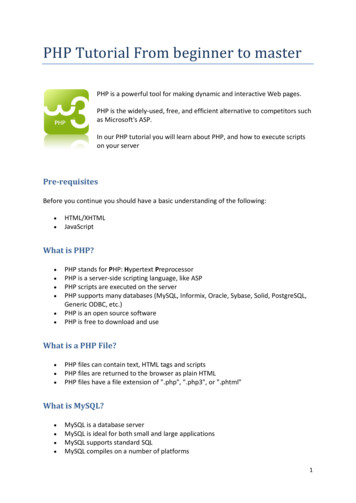
Transcription
PHP Tutorial From beginner to masterPHP is a powerful tool for making dynamic and interactive Web pages.PHP is the widely-used, free, and efficient alternative to competitors suchas Microsoft's ASP.In our PHP tutorial you will learn about PHP, and how to execute scriptson your serverPre-requisitesBefore you continue you should have a basic understanding of the following: HTML/XHTMLJavaScriptWhat is PHP? PHP stands for PHP: Hypertext PreprocessorPHP is a server-side scripting language, like ASPPHP scripts are executed on the serverPHP supports many databases (MySQL, Informix, Oracle, Sybase, Solid, PostgreSQL,Generic ODBC, etc.)PHP is an open source softwarePHP is free to download and useWhat is a PHP File? PHP files can contain text, HTML tags and scriptsPHP files are returned to the browser as plain HTMLPHP files have a file extension of ".php", ".php3", or ".phtml"What is MySQL? MySQL is a database serverMySQL is ideal for both small and large applicationsMySQL supports standard SQLMySQL compiles on a number of platforms1
MySQL is free to download and usePHP MySQL PHP combined with MySQL are cross-platform (you can develop in Windows andserve on a Unix platform)Why PHP? PHP runs on different platforms (Windows, Linux, Unix, etc.)PHP is compatible with almost all servers used today (Apache, IIS, etc.)PHP is FREE to download from the official PHP resource: www.php.netPHP is easy to learn and runs efficiently on the server sideWhere to Start?To get access to a web server with PHP support, you can: Install Apache (or IIS) on your own server, install PHP, and MySQLOr find a web hosting plan with PHP and MySQL supportPHP InstallationWhat do you need?Most people would prefer to install a all-in-one solution:WampServer 2.0i [07/11/09] for Windows platformIncludes :- Apache 2.2.11- MySQL 5.1.36- PHP .com/ for Linux platformAlready have a web server?If your server supports PHP you don't need to do anything.Just create some .php files in your web directory, and the server will parse them for you.Because it is free, most web hosts offer PHP support. However, if your server does not2
support PHP, you must install PHP. Here is a link to a good tutorial from PHP.net on how toinstall PHP5: http://www.php.net/manual/en/install.phpDownload PHPDownload PHP for free here: http://www.php.net/downloads.phpDownload MySQL DatabaseDownload MySQL for free here: http://www.mysql.com/downloads/index.htmlDownload Apache ServerDownload Apache for free here: http://httpd.apache.org/download.cgiDownload a nice text editor [Not PHP SyntaxPHP code is executed on the server, and the plain HTML result is sent to the browser.Basic PHP SyntaxA PHP scripting block always starts with ?php and ends with ? . A PHP scripting block canbe placed anywhere in the document.On servers with shorthand support enabled you can start a scripting block with ? and endwith ? .For maximum compatibility, we recommend that you use the standard form ( ?php) ratherthan the shorthand form. ?php? A PHP file normally contains HTML tags, just like an HTML file, and some PHP scripting code.Below, we have an example of a simple PHP script which sends the text "Hello World" to thebrowser:3
html body ?phpecho "Hello World";? /body /html Each code line in PHP must end with a semicolon. The semicolon is a separator and is usedto distinguish one set of instructions from another.There are two basic statements to output text with PHP: echo and print. In the exampleabove we have used the echo statement to output the text "Hello World".Note: The file must have a .php extension. If the file has a .html extension, the PHP code willnot be executed.Comments in PHPIn PHP, we use // to make a single-line comment or /* and */ to make a large commentblock. html body ?php//This is a comment/*This isa commentblock*/? /body /html 4
PHP VariablesA variable is used to store information.Variables in PHPVariables are used for storing a values, like text strings, numbers or arrays.When a variable is declared, it can be used over and over again in your script.All variables in PHP start with a sign symbol.The correct way of declaring a variable in PHP: var name value;New PHP programmers often forget the sign at the beginning of the variable. In that case it will notwork.Let's try creating a variable containing a string, and a variable containing a number: ?php txt "Hello World!"; x 16;? PHP is a Loosely Typed LanguageIn PHP, a variable does not need to be declared before adding a value to it.In the example above, you see that you do not have to tell PHP which data type the variable is.PHP automatically converts the variable to the correct data type, depending on its value.In a strongly typed programming language, you have to declare (define) the type and name of thevariable before using it.In PHP, the variable is declared automatically when you use it.Naming Rules for Variables A variable name must start with a letter or an underscore " "A variable name can only contain alpha-numeric characters and underscores (a-z, A-Z, 0-9, and)5
A variable name should not contain spaces. If a variable name is more than one word, it shouldbe separated with an underscore ( my string), or with capitalization ( myString)PHP String VariablesA string variable is used to store and manipulate text.String Variables in PHPString variables are used for values that contains characters.In this chapter we are going to look at the most common functions and operators used to manipulatestrings in PHP.After we create a string we can manipulate it. A string can be used directly in a function or it can bestored in a variable.Below, the PHP script assigns the text "Hello World" to a string variable called txt: ?php txt "Hello World";echo txt;? The output of the code above will be:Hello WorldNow, lets try to use some different functions and operators to manipulate the string.The Concatenation OperatorThere is only one string operator in PHP.The concatenation operator (.) is used to put two string values together.To concatenate two string variables together, use the concatenation operator: ?php txt1 "Hello World!"; txt2 "What a nice day!";echo txt1 . " " . txt2;? 6
The output of the code above will be:Hello World! What a nice day!If we look at the code above you see that we used the concatenation operator two times. This is becausewe had to insert a third string (a space character), to separate the two strings.The strlen() functionThe strlen() function is used to return the length of a string.Let's find the length of a string: ?phpecho strlen("Hello world!");? The output of the code above will be:12The length of a string is often used in loops or other functions, when it is important to know when thestring ends. (i.e. in a loop, we would want to stop the loop after the last character in the string).The strpos() functionThe strpos() function is used to search for character within a string.If a match is found, this function will return the position of the first match. If no match is found, it willreturn FALSE.Let's see if we can find the string "world" in our string: ?phpecho strpos("Hello world!","world");? The output of the code above will be:6The position of the string "world" in our string is position 6. The reason that it is 6 (and not 7), is thatthe first position in the string is 0, and not 1.7
Complete PHP String ReferenceFor a complete reference of all string functions, go to our complete PHP String Reference.The reference contains a brief description, and examples of use, for each function!PHP OperatorsOperators are used to operate on values.PHP OperatorsThis section lists the different operators used in PHP.Arithmetic OperatorsOperatorDescriptionExampleResult Additionx 2x 24-Subtractionx 25-x3*Multiplicationx 4x*520/Division15/55/232.5%Modulus (division remainder)5%210%810%2120 Incrementx 5x x 6--Decrementx 5x--x 4Assignment OperatorsOperatorExampleIs The Same As x yx y8
x yx x y- x- yx x-y* x* yx x*y/ x/ yx x/y. x. yx x.y% x% yx x%yComparison OperatorsOperatorDescriptionExample is equal to5 8 returns false! is not equal5! 8 returns true is greater than5 8 returns false is less than5 8 returns true is greater than or equal to5 8 returns false is less than or equal to5 8 returns trueLogical OperatorsOperatorDescriptionExample&&andx 6y 3(x 10 && y 1) returns true orx 6y 3(x 5 y 5) returns false!notx 6y 3!(x y) returns true9
PHP If.Else StatementsConditional statements are used to perform different actions based on differentconditions.Conditional StatementsVery often when you write code, you want to perform different actions for different decisions.You can use conditional statements in your code to do this.In PHP we have the following conditional statements: if statement - use this statement to execute some code only if a specified condition is trueif.else statement - use this statement to execute some code if a condition is true andanother code if the condition is falseif.elseif.else statement - use this statement to select one of several blocks of code to beexecutedswitch statement - use this statement to select one of many blocks of code to be executedThe if StatementUse the if statement to execute some code only if a specified condition is true.Syntaxif (condition) code to be executed if condition is true;The following example will output "Have a nice weekend!" if the current day is Friday: html body ?php d date("D");if ( d "Fri") echo "Have a nice weekend!";? /body /html Notice that there is no .else. in this syntax. You tell the browser to execute some code only if thespecified condition is true.10
The if.else StatementUse the if.else statement to execute some code if a condition is true and another code if a condition isfalse.Syntaxif (condition)code to be executed if condition is true;elsecode to be executed if condition is false;ExampleThe following example will output "Have a nice weekend!" if the current day is Friday, otherwise it willoutput "Have a nice day!": html body ?php d date("D");if ( d "Fri")echo "Have a nice weekend!";elseecho "Have a nice day!";? /body /html If more than one line should be executed if a condition is true/false, the lines should be enclosed withincurly braces: html body ?php d date("D");if ( d "Fri"){echo "Hello! br / ";echo "Have a nice weekend!";echo "See you on Monday!";}? /body /html 11
The if.elseif.else StatementUse the if.elseif.else statement to select one of several blocks of code to be executed.Syntaxif (condition)code to be executed if condition is true;elseif (condition)code to be executed if condition is true;elsecode to be executed if condition is false;ExampleThe following example will output "Have a nice weekend!" if the current day is Friday, and "Have a niceSunday!" if the current day is Sunday. Otherwise it will output "Have a nice day!": html body ?php d date("D");if ( d "Fri")echo "Have a nice weekend!";elseif ( d "Sun")echo "Have a nice Sunday!";elseecho "Have a nice day!";? /body /html PHP Switch StatementConditional statements are used to perform different actions based on differentconditions.The PHP Switch StatementUse the switch statement to select one of many blocks of code to be executed.Syntaxswitch (n){case label1:12
code to be executed if n label1;break;case label2:code to be executed if n label2;break;default:code to be executed if n is different from both label1 and label2;}This is how it works: First we have a single expression n (most often a variable), that is evaluated once.The value of the expression is then compared with the values for each case in the structure. If there is amatch, the block of code associated with that case is executed. Use break to prevent the code fromrunning into the next case automatically. The default statement is used if no match is found.Example html body ?phpswitch ( x){case 1:echo "Number 1";break;case 2:echo "Number 2";break;case 3:echo "Number 3";break;default:echo "No number between 1 and 3";}? /body /html PHP ArraysAn array stores multiple values in one single variable.What is an Array?A variable is a storage area holding a number or text. The problem is, a variable will hold only onevalue.An array is a special variable, which can store multiple values in one single variable.13
If you have a list of items (a list of car names, for example), storing the cars in single variables couldlook like this: cars1 "Saab"; cars2 "Volvo"; cars3 "BMW";However, what if you want to loop through the cars and find a specific one? And what if you had not 3cars, but 300?The best solution here is to use an array!An array can hold all your variable values under a single name. And you can access the values byreferring to the array name.Each element in the array has its own index so that it can be easily accessed.In PHP, there are three kind of arrays: Numeric array - An array with a numeric indexAssociative array - An array where each ID key is associated with a valueMultidimensional array - An array containing one or more arraysNumeric ArraysA numeric array stores each array element with a numeric index.There are two methods to create a numeric array.1. In the following example the index are automatically assigned (the index starts at 0): cars array("Saab","Volvo","BMW","Toyota");2. In the following example we assign the index manually: cars[0] "Saab"; cars[1] "Volvo"; cars[2] "BMW"; cars[3] "Toyota";ExampleIn the following example you access the variable values by referring to the array name and index: ?php cars[0] "Saab"; cars[1] "Volvo"; cars[2] "BMW"; cars[3] "Toyota";14
echo cars[0] . " and " . cars[1] . " are Swedish cars.";? The code above will output:Saab and Volvo are Swedish cars.Associative ArraysAn associative array, each ID key is associated with a value.When stor
PHP Tutorial From beginner to master . PHP is a powerful tool for making dynamic and interactive Web pages. PHP is the widely-used, free, and efficient alternative to competitors such as Microsoft's ASP. In our PHP tutorial you will learn about PHP, and how to execute scripts on your server . Pre-requisites Before you continue you should have a basic understanding of the following: HTML .
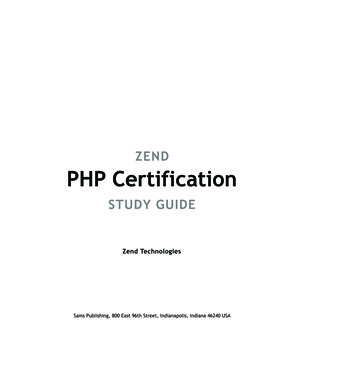


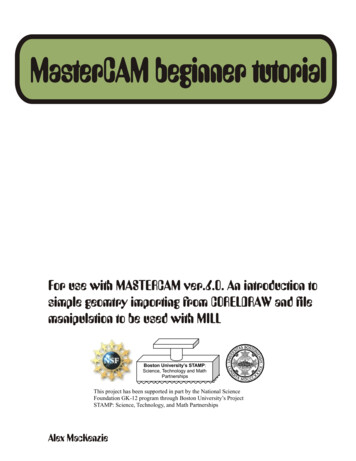
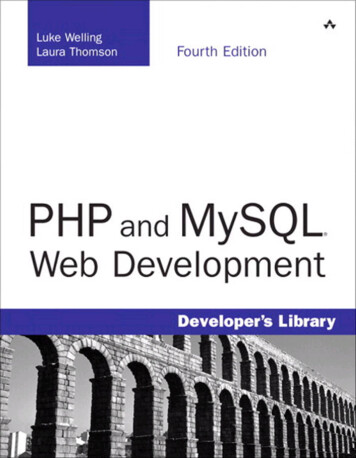
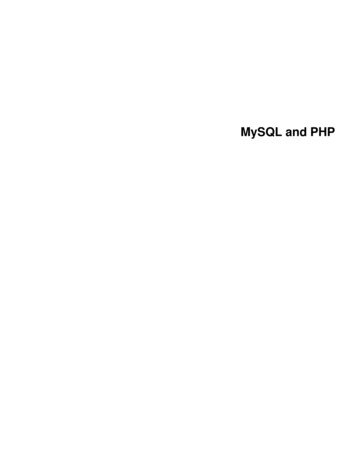

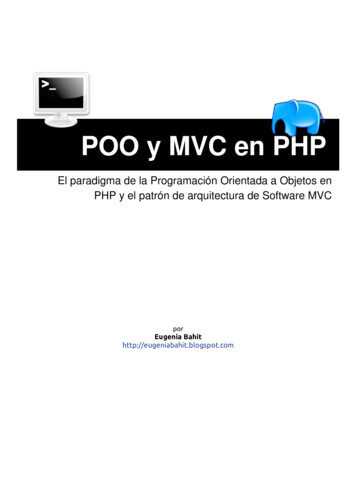

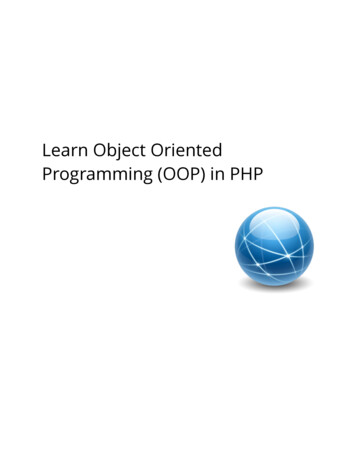
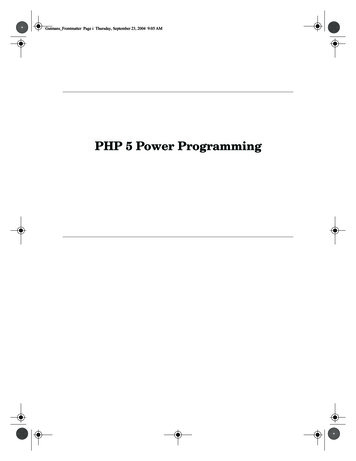
![Unreal Engine 4 Tutorial Blueprint Tutorial [1] Basic .](/img/5/ue4-blueprints-tutorial-2018.jpg)